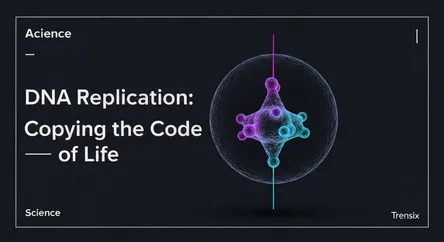Science
DNA Replication: Copying the Code of Life

Explore the essential biological process of DNA replication, where the blueprint of life is copied for cell growth, repair, and reproduction.
What is it?
DNA replication is the fundamental process by which a cell makes an identical copy of its entire DNA. Before a cell divides, it must duplicate its genetic material to ensure that each new daughter cell receives a complete set of instructions. This process is 'semiconservative,' meaning the original DNA molecule unwinds into two separate strands, and each strand serves as a template for a new complementary strand. Enzymes, most notably DNA polymerase, orchestrate this intricate molecular dance, reading the existing strand and adding matching nucleotides to build the new one, resulting in two identical DNA double helices where there was once only one.
Why is it trending?
Interest in DNA replication is constantly renewed by breakthroughs in biotechnology and medicine. Fields like CRISPR gene editing, personalized medicine, and advanced cancer therapies all hinge on a deep understanding of this process. Researchers are continually uncovering new details about how replication is controlled and how cells repair errors. These discoveries are paving the way for innovative treatments for genetic diseases and a better understanding of aging and cancer, making it a hot topic in scientific research and public health discussions.
How does it affect people?
DNA replication is vital for every person's existence. It's the reason we can grow from a single cell, heal wounds, and maintain our bodies. The accuracy of this process is paramount; errors or mutations during replication can lead to genetic disorders, developmental issues, and various types of cancer. Understanding how replication works and what happens when it goes wrong is crucial for modern medicine, informing the development of anti-cancer drugs that target rapidly replicating cells and gene therapies aimed at correcting inherited genetic mistakes.